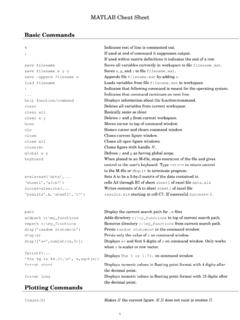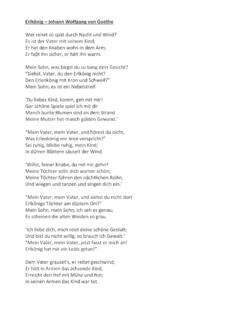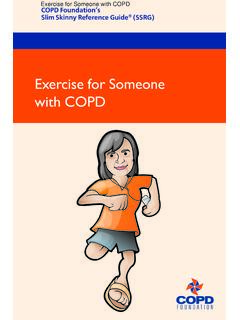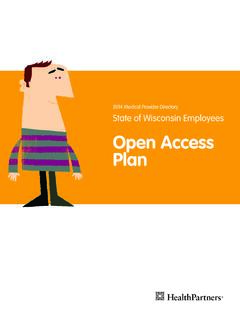Transcription of Gallstones Diet Sheet
1 Gallstones Diet Sheet . Avoid common Gallstones | Patient Page 1 of 4. View this article online at Gallstones Diet Sheet Gallstones are common. They cause no symptoms in two out of three people who have them. They sometimes cause problems such as pain, yellowing of the skin or the whites of the eyes (jaundice), inflammation of the pancreas (pancreatitis), and gallbladder inflammation. Surgery is the usual treatment for Gallstones that cause symptoms. Gallstones occur when bile, which is normally fluid, forms stones in your gallbladder. This is the organ that sits beneath the liver.
2 Most commonly, Gallstones contain lumps of fatty (cholesterol-like) material that has solidified and hardened. Sometimes bile pigments or calcium deposits form Gallstones . Sometimes just a few small stones are formed; sometimes a great many. Occasionally, just one large stone is formed. About one in three women and one in six men form Gallstones at some stage in their lives. Gallstones become more common with increasing age. The risk of forming Gallstones increases with: Pregnancy. Obesity. Diabetes. Smoking. Rapid weight loss. Having a close relative with Gallstones . Taking certain medicines such as the contraceptive pill.
3 Eating a generally unhealthy diet, particularly a diet which is high in fat. You can reduce your risk of developing Gallstones by: Eating vegetable protein - for example, beans and pulses. Increasing fibre intake. Eating nuts. Increasing dietary calcium. Increasing vitamin C intake. Drinking coffee. Drinking a moderate amount of alcohol. The role of the gallbladder in digestion The gallbladder plays a part in the digestion of food. It collects and stores bile, then releases the bile into the small intestine when food enters the small intestine from the stomach. This helps with the digestion of food because the gallbladder contains bile salts (and other substances) which break down fat.
4 The bile duct which connects the gallbladder to the small intestine can become blocked by Gallstones . This may cause symptoms such as pain, bloating, a feeling of sickness (nausea), and being sick (vomiting). The stone may cause a blockage and make it difficult for the bile to be released from the bile duct. Dietary changes to help with symptoms of Gallstones There is no specific diet for treating symptoms of Gallstones . Most people who have symptoms of Gallstones will have their gallbladder removed by an operation called cholecystectomy. However, eating a low-fat diet is likely to reduce symptoms while you are waiting for the operation, as the gallbladder will not be stimulated to release bile into the small intestine.
5 If you find that any particular foods trigger the onset of the pain then try to avoid eating those foods until you have had your gallbladder removed. Once you have had the operation there is no need to follow any particular diet, although of course it is always a good idea to eat as healthily as possible. 13/07/2017. Gallstones Diet Sheet . Avoid common Gallstones | Patient Page 2 of 4. If you are overweight, losing weight will be beneficial. However, it is important to do this gradually, as rapid weight loss has been associated with the development of Gallstones . A safe weight loss of 1-2 lbs ( to 1 kg) per week is recommended.
6 A healthy balanced diet consists of: Plenty of fruit and vegetables. Aim to have at least five portions each day. Plenty of starchy carbohydrates. Examples include bread, rice, cereals, pasta, potatoes, chapattis and plantain. Choose wholegrain varieties where possible. Some milk and dairy products (2-3 portions per day). Choose low-fat dairy products. Some meat, fish, eggs and alternatives such as beans and pulses. Limited amounts of foods high in fats and sugars. Limit saturated fat that is found in animal products, such as butter, ghee, cheese, meat, cakes, biscuits and pastries.
7 Replace these with unsaturated fats found in non-animal products, such as sunflower, rapeseed and olive oil, avocados, nuts and seeds. But remember that unsaturated fats can also trigger gallstone pain. Make sure your diet is high in fibre. This can be found in beans, pulses, fruit and vegetables, oats and wholegrain products, such as bread, pasta and rice. Drink plenty of fluid - at least two litres daily, such as water or herbal teas. Try not to eat too much fat at one mealtime. It might be helpful to have smaller, more frequent meals. Some people find that specific foods are the triggers for symptoms.
8 Keep a food and symptom diary to identify trigger foods. Avoid these foods for a two-week trial period and note any improvements in symptoms. Clinical Editor's notes (July 2017). Dr Hayley Willacy has read a study by researchers at Nuffield Department of Population Health at the University of Oxford on vegetarianism and gallstone disease - see below. British vegetarians tend to consume more fibre, less fat and have a lower BMI all factors which are associated with lower rates of gallstone disease. Therefore, it might be expected that vegetarian diets would have a protective effect for gallstone disease.
9 However, this study has shown there is a small but statistically significant positive association between vegetarian diet and symptomatic gallstone disease. Cutting down on fat A high-fat diet and fatty foods can sometimes cause discomfort and painful symptoms. They may also cause fatty stools (steatorrhoea), which are oily, pale and smelly. Steatorrhoea is a sign that fat is not being digested properly. Here are some ways to cut down on fat in the diet. High-fat foods Lower-fat alternatives Butter, lard, ghee, oils, spreads. Lower-fat/light spreads, oil sprays for cooking, jam, honey.
10 Whole milk, cream, full-fat yoghurts. Skimmed or semi-skimmed milk, half-fat cr me fra che, low-fat evaporated milk, low-fat or fat-free yoghurt. Full-fat cheese, such as Cheddar, Brie and Cottage cheese, light soft cheeses such as Philadelphia . Stilton. or Dairylea Light , quark, reduced-fat Cheddar cheese or naturally lower-fat cheeses such as mozzarella and ricotta (matchbox-sized portion). Snacks, such as cakes, biscuits, pastries, Toasted teacakes, low-fat popcorn, fruit and vegetables, crisps and nuts. dried fruit, meringues, rice cakes, Rich Tea biscuits, low- fat crisps such as Quavers or Skips.













